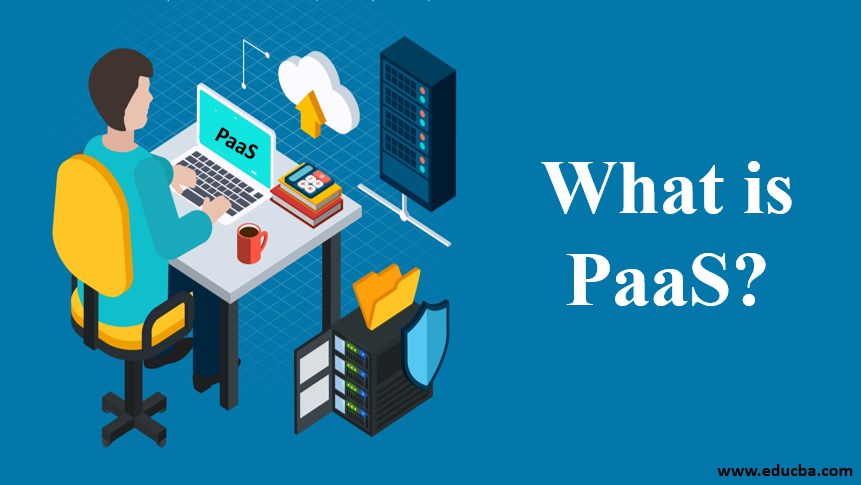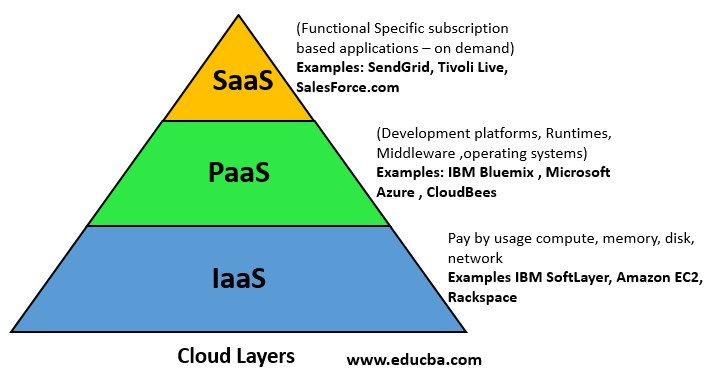Updated March 24, 2023

Introduction to PaaS
PaaS is a type of cloud computing product in which a service provider provides customers with a platform that enables them to build, operate and manage business applications without the infrastructure needed for such software development. Because developers and other users do not see the underlying infrastructures, the PaaS Architectures are similar to serverless principles, where a cloud service provider owns, operates the server, and controls resource allocation.
What is PaaS?
Platform as a service is a cloud-based development model that enables the user to deliver starting from simple applications needed in day-to-day life to centralized applications required for big organizations.
- The working procedure of PaaS is to provide a smooth working principle in the cloud that includes the entire application development phase in the cloud.
- In the PaaS cloud computing platform, the cloud service provider at the back end handles scalability and the end-user does not have to worry about managing the infrastructure.
- With the help of PaaS, we also get additional resources, including database management systems, programming languages, libraries, and various software development tools that work on the cloud and made our daily life better.
- It has varieties of usefulness and among them, it cuts down the price and headache of installing extra software licenses, core applications, and other platform resources.
- The architectures are used to hide their underlying infrastructure from developers and other end users. As a result, the model becomes a serverless computing model and function-as-a-service architecture where the cloud service provider manages and runs the server and controls the distribution of resources.
- It helps us to organize and maintain useful applications and services whereas third-party providers maintain every other service in the cloud.
How PaaS Works?
Platform-as-a-Service, is one of the best cloud computing technology after IaaS that is less expensive, has a well-equipped management system, and can beat any other old traditional cloud system.
Nevertheless, how exactly does it work? We will provide some basic points that will contain the working principles:
- PaaS is actually a sandwiched layer between SaaS and IaaS that contains all the middleware platform tools.
- PaaS provides a pay-per-use feature. Therefore, without having to buy, configure, develop, maintain and install every application to work and use for their purpose that also requires a strong maintenance team to maintain them and service them on a daily basis, one can easily just use and pay for that price that they require for their usage. That is why for proper and best utilization, one can pay only for their usage of their applications.
There are various types of PaaS service providers present that has very useful features.
- PaaS provides the user a basic data storage and a server for maintaining all computing systems that are required for servicing.
- Support the use of powerful web engines and platforms including Google applications.
- Support social networking sites like Facebook.
- Daily essential commodities that really make changes to everyday life.
What’s Included in PaaS?
It includes a variety of features and services.
The main offerings included by the vendors are:
- Development Tools: PaaS vendors offer necessary tools for software development, including a debugger, a compiler, and other essential tools that work together as a framework. The specific tools offered will depend on the vendor, but PaaS offerings include everything a developer needs to build their application.
- Middleware: Platforms offered as a service include middleware so that developers do not have to build it by themselves. Middleware is software that is sandwiched between user applications and the machine’s operating system. Middleware is necessary for running an application.
- Operating Systems: A PaaS vendor maintains the operating system that developers work on and the application runs on.
- Database Management: PaaS administer maintain a database system. They will usually provide developers with a database management system as well.
- Infrastructure: PaaS is the next layer up from IaaS and has everything included in IaaS. A PaaS provider either manages servers, storage or purchases them from an IaaS provider.
Advantages and Disadvantages of PaaS
Given below are the advantages and disadvantages mentioned:
Advantages:
- Simplified Development: Programmers can focus on development and innovation without worrying about the infrastructure and cloud-computing tools minimize the time by taking less effort and using smart work using less code as possible to build the apps.
- Flexibility and Portability: Some PaaS service providers give the user lots of choices for using multiple platforms, such as PCs, laptops and other electronic devices in developing apps quicker and make it portable.
- Affordability: PaaS brings affordability for individuals or organizations to use cloud software of their choice without having to install extra software or shell out the extra cost in installing and maintaining software.
- Collaboration with Development Teams: Since applications made using PaaS can be accessed over the Internet, teams can work together globally irrespective of any locations.
- Efficiency: PaaS has been efficiently managing application development phases in the cloud that includes testing, managing and updating apps at regular intervals within the same cloud server and providing a quality and efficient infrastructure.
Disadvantages:
- Data Privacy: Data is a big risk and is kept private and stored in the server most of the time to maintain data privacy.
- Integration: There are chances that data mismatch can happen while integrating data because data are stored both in local storage and cloud. So it is very difficult to differentiate them and the users felt difficulty while accessing the data whenever they want.
Conclusion
PaaS has become one of the topmost performers in the Cloud-computing model located after IaaS that has tremendous speed, automate management and scaling of applications on platform that support continuous delivery and reduce infrastructure operating costs.
Recommended Articles
This is a guide to What is PaaS? Here we discuss what is PaaS? how does it work? along with different features and services. You can also go through our other related articles to learn more –


